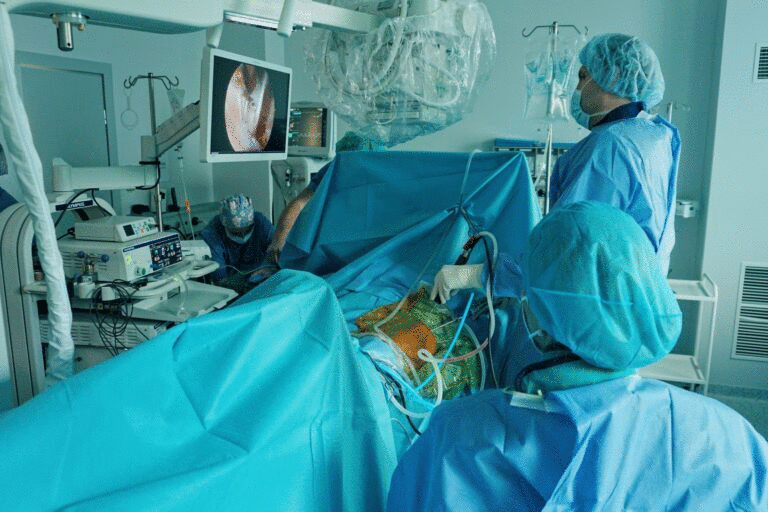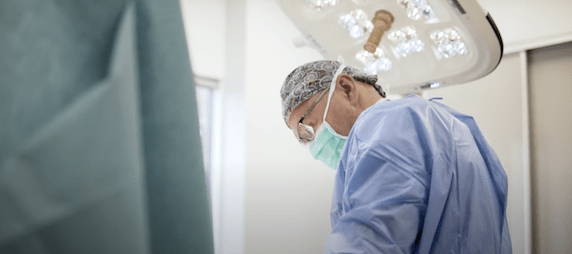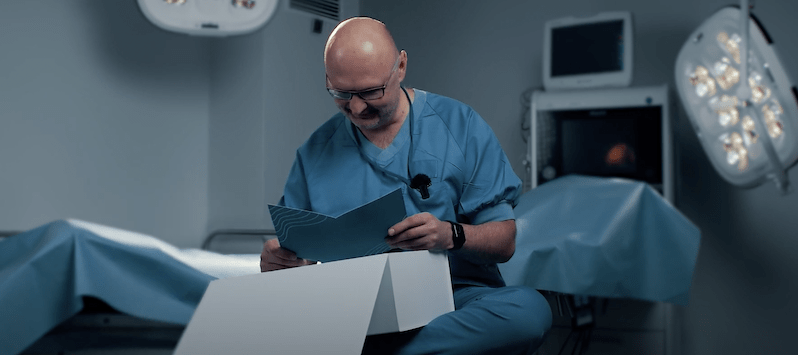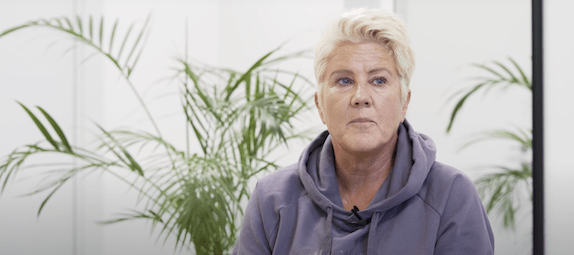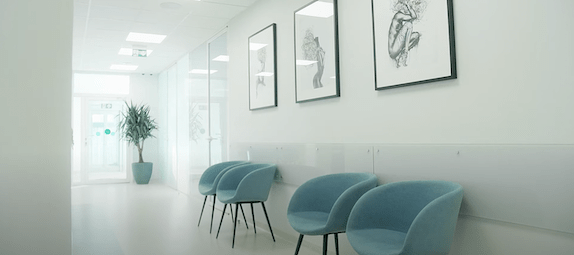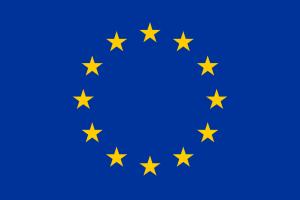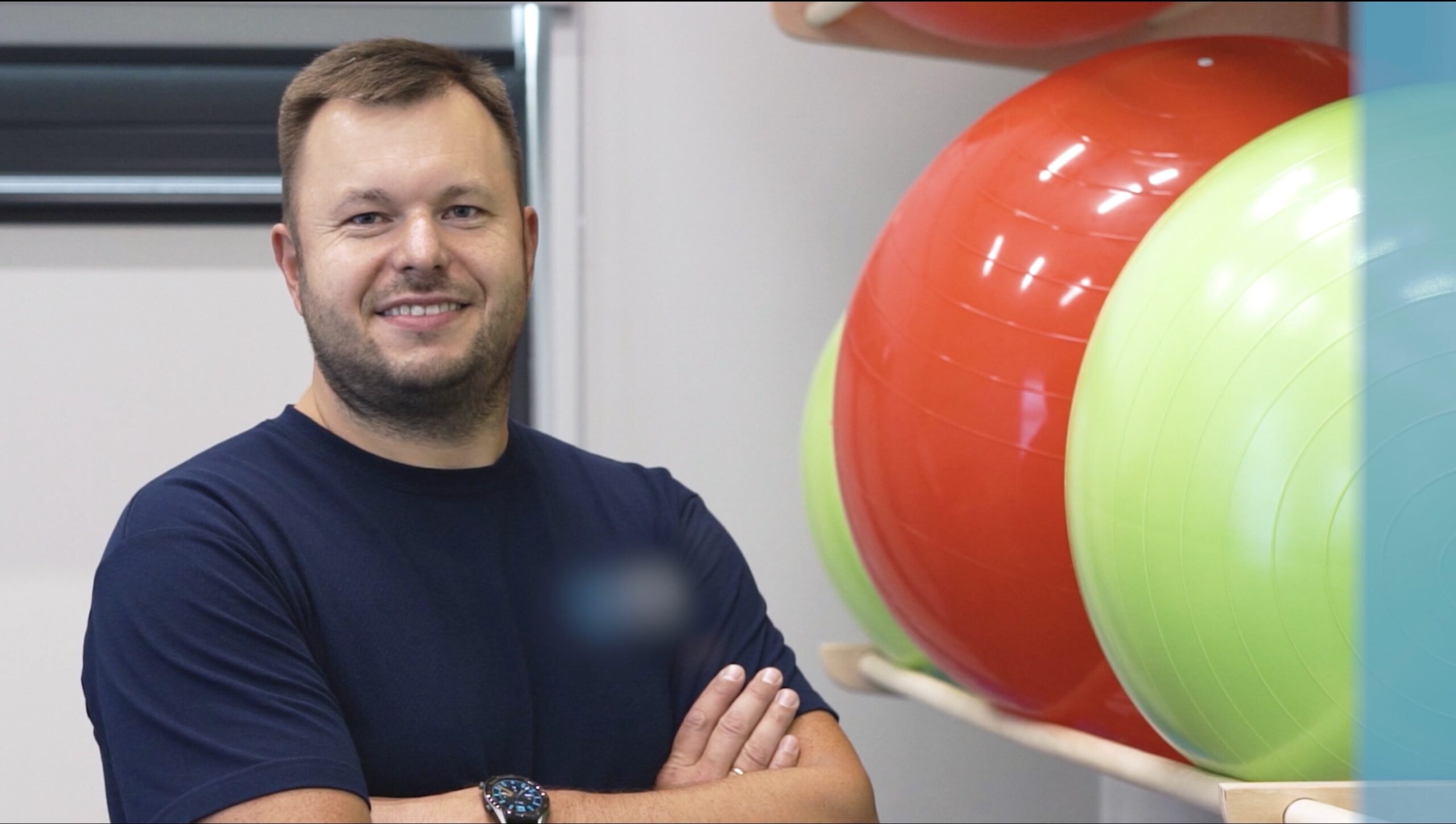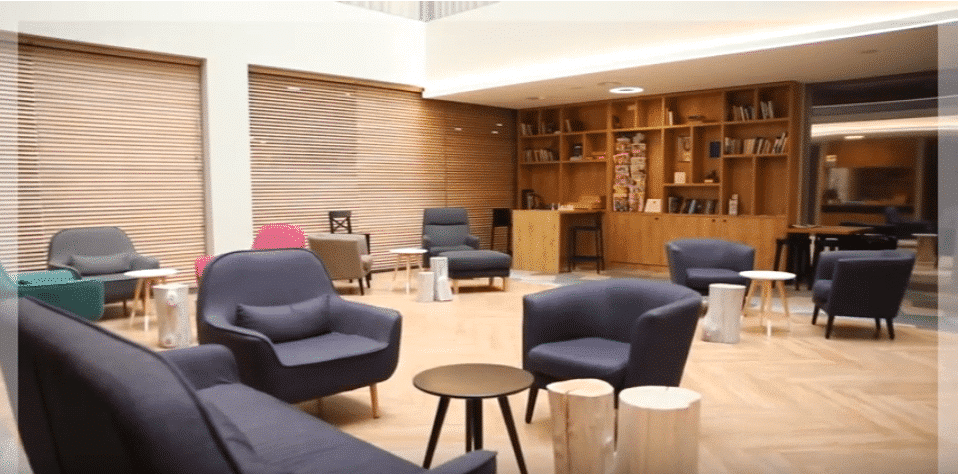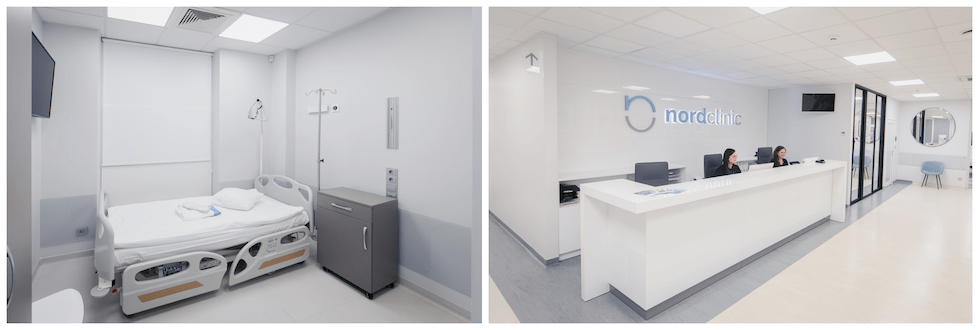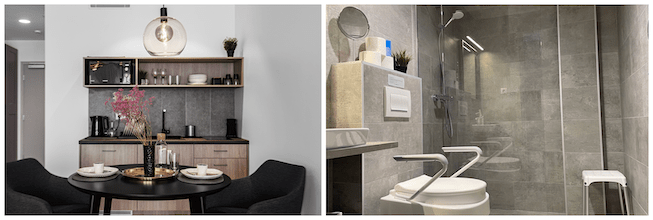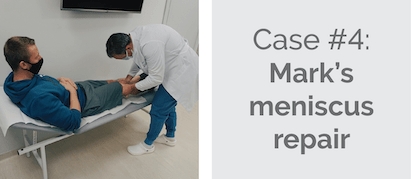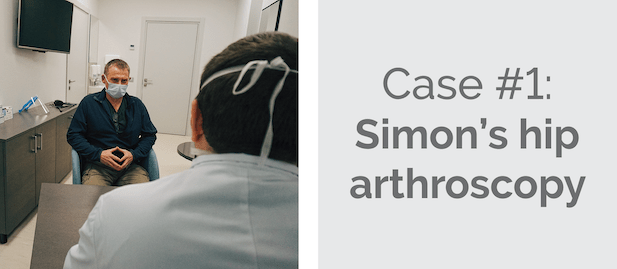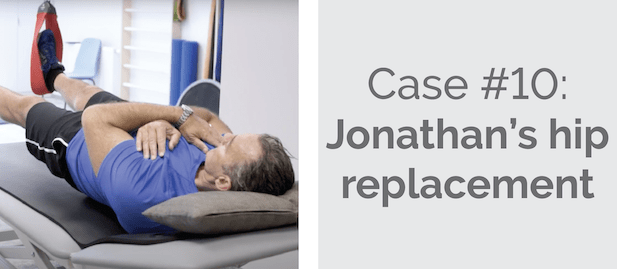Hip Arthroscopy Abroad: Lithuania
We are one of the leading orthopaedic surgery clinics for medical tourists in the European Union. We are proud of the fact that over 90 % of our patients come from the UK, Ireland, Norway, Sweden, the United States, Canada and other countries.
Reviews & Facebook group
Our patients and clinic in the media
Prices
- hip arthroscopy – from 2.920 £ | or from 1.800 £ with S2 funding*
- hip impingement – from 3.380 £
- hip replacement – from 3.300 £
- MRI performed in 1 day – 155 £
*Your surgery can be partly funded via the S2 funding route (read more in the next tab)
- accommodation with medical care – from 62 £ per night
The S2 route may entitle you to NHS funding for planned state healthcare treatment in Lithuania. You can save up to 40% for the hip arthroscopy surgery. Contact our customer service for more information:
- Hip arthroscopy
- 2.920 £ without S2 funding
- 1.800 £ with S2 funding
- consultation with the surgeon
- necessary health tests
- surgery
- implant
- anaesthesia
- hospitalisation
- 24/7 personal assistance during your stay
- transfers to / from the airport, hotel and clinic
- all documents translated to English
Get your surgery for free by claiming a refund from your local health board. The clinic helps patients with the documents needed to claim a refund after following the EU directive route for medical treatment abroad. It applies to patients who are insured under the systems of one of the EU countries and may not get the surgery due to long waiting times.
- hip arthroscopy – from 3.500 € | or from 2.150 € with S2 funding*
- hip impingement – from 4.060 €
- hip replacement – from 3.960 €
- MRI performed in 1 day – 220 €
*Your surgery can be partly funded via the S2 funding route (read more in the next tab)
- accommodation with medical care – from 74 € per night
The S2 route may entitle you to NHS funding for planned state healthcare treatment in Lithuania. You can save up to 40% for the hip arthroscopy surgery. Contact our customer service for more information:
- Hip arthroscopy
- 3.500 € without S2 funding
- 2.150 € with S2 funding
- consultation with the surgeon
- necessary health tests
- surgery
- implant
- anaesthesia
- hospitalisation
- 24/7 personal assistance during your stay
- transfers to / from the airport, hotel and clinic
- all documents translated in English
The clinic uses Zimmer Biomet, Smith & Nephew and other highest quality implants. The implant option is discussed in detail once the surgeon reviews your individual case.
Get your surgery for free by claiming a refund from your local health board. The clinic helps patients with the documents needed to claim a refund after following the EU directive route for medical treatment abroad. It applies to patients who are insured under the systems of one of the EU countries and may not get the surgery due to long waiting times.
Hip Arthroscopy case analysis
Patient stories
Clinic videos
Nordorthopaedics Center Of Excellence

Our surgeon Valdemar Loiba
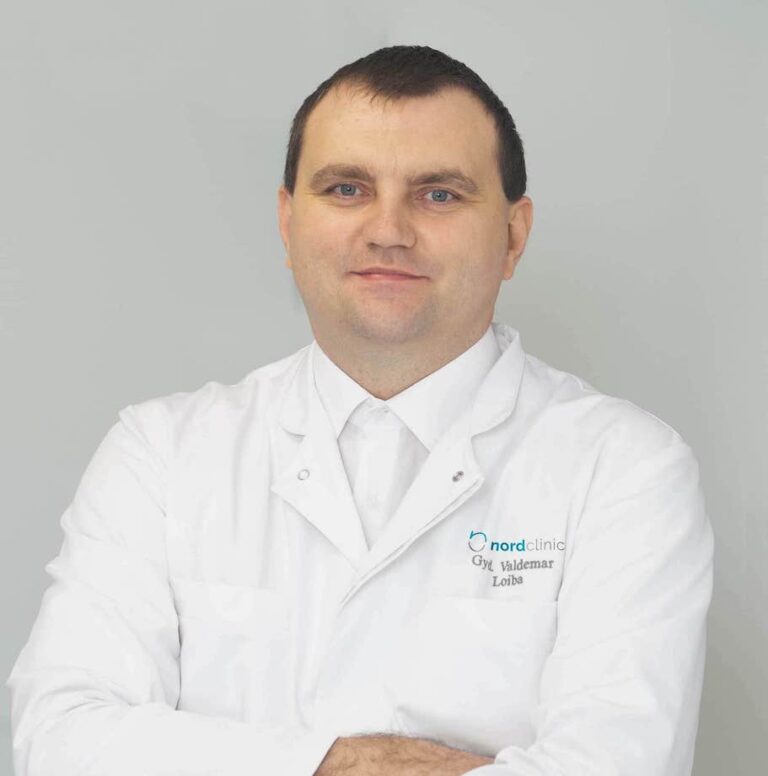
- More than 15 years of working experience
- Performs 400+ arthroscopies a year, including 100+ hip arthroscopies.
- Author of 6 international oral presentations
- Read more
Refund for EU patients
Get your surgery for free by claiming a refund from your local health board. The clinic helps patients with the documents needed to claim a refund after following the EU directive route for medical treatment abroad. It applies to patients who are insured under the systems of one of the EU countries and may not get the surgery due to long waiting times. On average our patients from the EU countries get fully refunded by their local health board in 5 months after their surgeries.
Rehabilitation packages
One of the most important factors for a quick and full recovery after surgery is proper rehabilitation. Rehabilitation helps recover after surgery as well as prevents formation of blood clots and helps avoid most of the postoperative complications and side effects. We offer two different rehabilitation packages:
Outpatient rehabilitation in Kaunas with a physiotherapist. The rehabilitation clinic is equipped with modern facilities. Individual rehabilitation programs are prepared by a kinesiologist with over 20 years of experience, Prof. Laimonas Siupsinskas. This type of rehabilitation is best suited for people who are physically active, athletes and those wishing to return to sports as soon as possible.
Rehabilitation in Kaunas – € 120 / £ 100 for one 1 h physiotherapy session per day.
- personalized rehabilitation course;
- specialist who is also a physiotherapist for Lithuanian Men’s National Basketball Team;
- all required medication;
- transportation to/from the rehabilitation clinic;
- read more about outpatient rehabilitation in Kaunas.
Inpatient rehabilitation at SPA resort in Druskininkai. It is equipped with modern facilities. The professionals there have years of experience working with people after various surgeries and injuries.
Rehabilitation at SPA resort in Druskininkai – from € 220 / £ 183 per day
- personalized rehabilitation course;
- room with TV and private bathroom;
- three meals a day;
- all medication needed;
- transportation to/from the rehabilitation centre;
- read more about inpatient rehabilitation in Druskininkai.
Our clinic
Self-catered accommodation with medical care
11 reasons that make us the most popular orthopaedic clinic abroad
One of the most important factors for a quick and full recovery after surgery is proper rehabilitation. Usually, clinics are not able to offer this due to costs savings. Our patients can choose between two inpatient and outpatient options: rehabilitation with a physiotherapist of the Lithuanian national basketball team, prof. L. Siupsinskas or rehabilitation at a medical SPA.
Our team of 5 orthopaedic surgeons has 10-20 years of experience in the field in total performing over 1.000 different orthopaedic surgeries per year. Moreover, our surgeons are members of various prestigious surgical societies both Lithuanian and international. Our leading joint replacement surgeon S. Tarasevicius is an author of 150 scientific publications in different medical journals, who has performed more than 3.500 joint replacement surgeries during 15+ years of his professional experience.
We are one of the leading orthopaedic surgery clinics for medical tourists in the European Union. We are proud of the fact that over 90 % of our patients come from the UK, Ireland, Norway, Sweden, the United States, Canada and other countries.
One of the world’s leading medical technology companies and orthopaedic implant manufacturers, Smith & Nephew, have chosen Nordorthopaedics as Center of Excellence in the Baltic States.
We are trusted by our patients and we appreciate all the reviews and feedback collected over the years. Find more than 150 testimonials here or on Google.
Already more than 4.000 of our former, current and future patients joined our online community with the aim to build a space for opinions and mutual support. Members are welcome to share experiences about their visit to the clinic and to discuss all surgery-related matters. No other orthopaedic clinic can offer such group support.
Being a true member of the International Society of Arthroplasty Registries, Lithuania is one of the leaders in low joint replacement revision rates, as only 9% of surgeries in Lithuania require revision in 10 years after surgery. Moreover, with the implants used at our clinic, only 2-3% of surgeries require revision in 10 years after surgery, while revision rates in some other Western countries, for example, USA, is as high as 17% in 10 years after surgery. The implants used at our clinic have been evaluated by other countries’ registries as those ensuring longest implant life, as compared to products of other manufacturers. Moreover, thanks to our active participation in collecting data for the registries, the surgical technique used at our clinic ensures best surgical outcomes.
Our clinic is seen on different media mentions like: BBC News, BBC Radio, The Telegraph, MailOnline, Winnipeg Free Press, CTV News, CBC, RTE Radio, itv.
Our clinic works according to the highest standards set by the European Union. This helps to guarantee the quality of medical services. We care about the safety, comfort and successful results of our patients from all over the world.
The clinic helps patients with the documents needed to claim a refund after following the EU directive route for medical treatment abroad. It applies to patients who are insured under the systems of one of the EU countries and may not get the surgery due to long waiting times.
We provide customer service in 9 foreign languages including English, Swedish, Norwegian, Danish, Italian, Spanish, French, Russian, Polish. Everyone in our clinic speaks English, including nurses, assistants and the surgeon.
Athletes treated at Nordorthopaedics
Official clinic of Lithuania national football teams

Highest quality implants
Our clinic uses implants based on their performance in international registries.
Being a true member of the International Society of Arthroplasty Registries, Lithuania is one of the leaders in low joint replacement revision rates, as only 9% of surgeries in Lithuania require revision in 10 years after surgery. Moreover, with the implants used at our clinic, only 2-3% of surgeries require revision in 10 years after surgery, while revision rates in some other Western countries, for example, USA, is as high as 17% in 10 years after surgery. The implants used at our clinic have been evaluated by other countries’ registries as those ensuring longest implant life, as compared to products of other manufacturers. Read more here.
13 patients' case studies
Direct flights to Lithuania





What is hip arthroscopy?
Hip arthroscopy is a minimally invasive hip joint surgery. The word “arthroscopy” literally means “to look inside the joint”. During arthroscopy, the hip joint is operated through small key-hole like incisions, so there is little to no damage to the surrounding tissues. A special miniature camera is used to examine the bones, cartilages, and ligaments. If necessary, the surgeon uses pencil-sized instruments to repair the damaged structures. The surgery usually takes from 1 to 2 hours.
Hip arthroscopy is performed if the patient has persistent joint pain, joint locking symptoms or pain during hip movement. There is a range of hip problems that can be treated with hip arthroscopy. Depending on the case, the surgeon may repair damaged cartilage, labrum, remove some excessive bone or loose bodies. The most commonly treated hip joint conditions are:
- Femoroacetabular impingement (excessive amount of bone);
- Labral tears;
- Chondral damage;
- Synovial disorders (excessive amount of synovial tissue);
- Psoas tendon problems;
- Problems around greater trochanter;
- Ischiofemoral impingement;
- Other problems.
Hip arthroscopy vs. open surgery
Through hip arthroscopy, a surgeon can treat the hip without having to make a huge incision and fully expose the joint. An arthroscopic approach allows for a shorter operating time, lower risk of infection, and less scarring. It is a favorable choice of many orthopaedic surgeons because it is simply less physically demanding on the patient.
During open hip surgery, the hip joint is exposed by making a long 15-20 centimeter incision. Such incisions take a long time to heal and demand more post-operative care. An arthroscopic surgery, on the other hand, only requires a few 1-centimeter incisions to access and operate on the joint. Post-surgery, these small incisions heal quickly, and so, patients can return to regular activities within a shorter period of time. If open hip surgery is performed with dislocation of the femoral head, there is a risk of aseptic necrosis of the femoral head.
Preparing for hip arthroscopy
Firstly, a prospective patient should contact the clinic and schedule an initial appointment. During the first consultation, a doctor evaluates their general health state and tailors the treatment plan to the needs of the patient. The patient should be prepared to state any existing allergies and discuss their medical history.
A patient should also prepare a list of all the medication which they regularly take (including prescription drugs, over-the-counter drugs, and herbal supplements). Medication and supplements with blood-thinning properties (such as aspirin, ibuprofen, fish oil, etc.) should only be taken with the doctor’s consent because they may increase the risk of bleeding.
It is strongly recommended to cease smoking and alcohol consumption at least a month before the surgery
Before surgery, it is recommended that the patients follow a healthy diet to ensure sufficient consumption of minerals and vitamins. Zinc, calcium, and iron are highly important for bone mineralization and healing processes. Vitamins A, D, and C ensure proper function of the immune system and recovery of the connective tissues.
Many choose to purchase ergonomic crutches, sometimes it is necessary to temporarily move the sleeping area downstairs.
On the day of the surgery, we advise that the patients wear loose-fitting clothes and comfortable slip-on shoes. Patients should not eat or drink at least 8 hours before surgery.
How is hip arthroscopy performed?
Hip arthroscopy is performed under general anaesthesia, meaning that a patient is fully unconscious the whole operating time. Once the patient is in the operating room, the nurses put an intravenous catheter to administer numbing medicines.
The skin of the affected joint is cleaned with antibacterial fluid and the leg is put in retraction (gently pulled to the side and along). Such positioning of the leg allows a surgeon to comfortably access the joint.
The surgeon makes a few 1-centimeter incisions next to the joint, and then, inserts an arthroscope and other fine surgical instruments.
An arthroscope is a miniature camera that is connected to the screen which the surgeon watches closely while operating. Before making any alterations to the bone, cartilages, or ligaments, the joint is filled with sterile fluid which makes all the structures visible with the arthroscope. Then, the surgeon examines the joint and repairs it, if necessary.
After the surgery, the surgeon removes all the instruments, puts in drain and sutures the incisions and covers the joint with sterile dressings.
FAQ about hip arthroscopy with our surgeon
Recovery after hip arthroscopy
After hip arthroscopy, a patient is moved to the recovery room where the hospital staff closely monitors the patient’s health status. It is completely normal to experience dizziness and moderate pain post-surgery. The nurses check on the patient frequently and administer pain medication if necessary. The patient usually spends one night at the hospital. Hip arthroscopy patients have to wear a special hip brace for 2 to 4 weeks post-op or as advised by the surgeon. It takes approximately 6 to 8 weeks to return to regular activities, like driving and bearing full weight on the operated leg.
Physical therapy and returning to sports
Physical therapy and active rehabilitation are necessary to achieve fastest recovery. Rehabilitation is usually divided into 3 phases which have different goals and milestones.
Phase 1 (the first month) usually begins on the next day after surgery and takes 4 weeks. The main goals for this phase are to restore joint motion, regain flexibility, and begin building strength. Recovery exercises usually include soft circumduction movements and stretching. Slowly progressing to the next recovery phase is more important than prematurely increasing the intensity and volume of the exercises. At the end of phase 1, patients can walk normally and drive again.
Phase 2 (4 to 8 weeks) takes approximately a month. During this time, patients work on increasing strength. The training routine includes advanced balance exercises, squatting, leg presses, riding a stationary bike, and stretching.
Phase 3 (8 to 12 weeks) is the last part of recovery. During the last phase, the patient continues to work on achieving a full range of motion and further strengthening leg muscles. It is the last stage before returning to sports, so it is crucial to resolve muscle tightness, and eventually, advance to the treadmill. By the end of the third rehabilitation month, most patients feel strong enough to effortlessly perform daily activities or slowly return to professional sports.
Send us your enquiry






